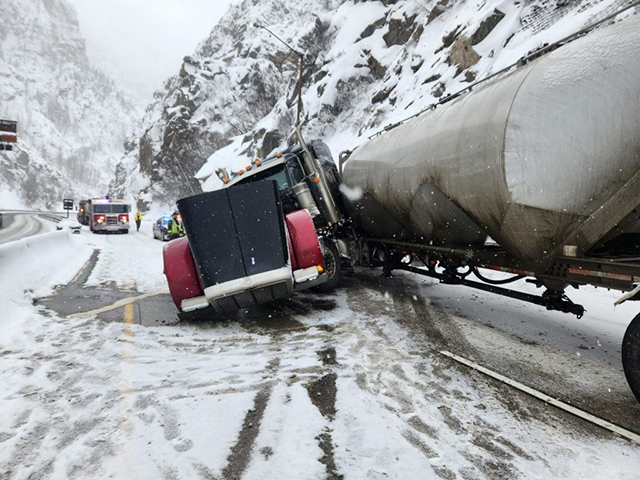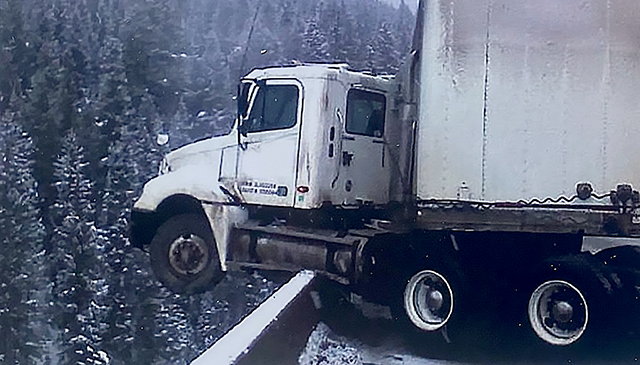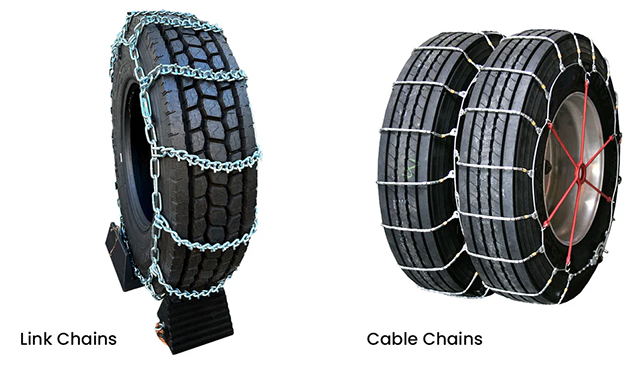
Understanding Semi / Truck Tire Chain Laws Across All States

Every freight route may look simple on a map, but snow, ice, or mountains can quickly change the game. Tire chain compliance is often overlooked, yet it is critical for safety, schedule reliability, and cost control.
For carriers hauling wide loads, heavy haul, flatbed, dry van, or expedited freight across North America, knowing each state’s chain requirements is essential. At Buchanan Hauling & Rigging, Inc., we’ve built a fleet, trailer network, and compliance culture that thrives in any weather. This guide covers state chain requirements, highlights key states, and explains best practices.
Why Tire Chain Laws Matter for Heavy Haul and Flatbed Carriers

Driving an oversized load over mountain passes or winter corridors requires proper traction. Many states have mandatory seasons, signage, and equipment standards for chains or alternative devices. Missing a chain requirement can cause delays, fines, or detours.
For carriers like Buchanan, crossing into Canada and Mexico adds complexity. Compliance with U.S. chain laws ensures we keep our service promises. Our motto, “Setting the Standard for Safety, One Mile at a Time,” reflects this commitment. See Mission and Values.
How Buchanan Hauling & Rigging Delivers Compliance and Reliability
Founded in 1996 by Geary Buchanan (with 24 years as an owner-operator), Buchanan Hauling & Rigging now operates 200+ power units and 900+ trailers. Our fleet spans flatbed, heavy haul, dry van, and more.
We manage regulatory risk for cross-border moves and coast-to-coast heavy structural shipments. Our team offers 24/7 tracking, dedicated logistics staff, and a claim ratio under 0.5%.
State by State: Tire Chain Requirements for Semi Trucks*

This overview helps you plan, but always check the state DOT site for the latest rules.
- Alabama: Chains allowed for safety on snow, rain, or slippery roads.
- Alaska: North of latitude 60°, chains not permitted May 1–Sept 15; other zones have similar limits.
- Arizona: Chains allowed when needed for safety.
- Arkansas: Chains permitted Nov 15–Apr 15 in some areas.
- California: Chains or traction devices required in mountains and where posted.
- Colorado: Chains required in certain areas Sept 1–May 31.
- Connecticut: Chains or studded tires allowed Nov 15–Apr 30; must not damage road.
- Delaware: Chains allowed Oct 15–Apr 15 for snow/ice.
- Florida/Hawaii: No mandatory chain laws due to climate.
- Georgia: Chains required when posted; outermost drive tires must be chained for commercial vehicles.
- Idaho: Chains or traction devices required on certain mountain passes.
- Illinois: Chains allowed when needed for safety.
- Indiana: Chains allowed for safety; studs allowed Oct 1–May 1.
- Iowa: Chains allowed for safety; limited dates may apply.
- Kansas: Chains allowed for snow/ice safety; no strict seasonal window.
- Kentucky: No fixed seasonal dates; cross-chains ≤¾ inch thick, spaced ≤10 inches.
- Louisiana: Chains allowed for snow/ice sliding risk.
- Maine: Studs prohibited May 1–Oct 1; chains allowed otherwise.
- Maryland: Chains may be required during snow emergencies or as posted.
- Massachusetts: Chains/studded tires prohibited May 1–Nov 1 without a permit.
- Michigan: Chains allowed for snow/ice; must not contact road surface.
- Minnesota: Chains allowed for safety (snow/ice).
- Mississippi: Chains allowed when needed for snow/ice.
- Missouri: Chains allowed for safety; studs banned Apr 1–Nov 1.
- Montana: Chains or traction devices required when roads unsafe; signage used.
- Nebraska: Chains allowed for snow/ice safety.
- Nevada: Chains/snow tires required as posted; unnecessary on improved highways.
- New Hampshire: Chains allowed when snow/ice present.
- New Jersey: Chains allowed for snow/ice safety.
- New Mexico: Chains allowed when required for safety.
- New York: Chains/snow tires required for “snow emergency” routes.
- North Carolina: Chains allowed for safety.
- North Dakota: Chains when needed; metal studs allowed Oct 15–Apr 15.
- Ohio: Chains allowed for safety; studs allowed Nov 1–Apr 15.
- Oklahoma: Chains allowed for safety.
- Oregon: Signs indicate when six chains must be carried for commercial vehicles.
- Pennsylvania: Chains allowed for snow/ice safety.
- Rhode Island: Chains allowed when required for safety.
- South Carolina: Chains allowed when needed.
- South Dakota: DOT may restrict travel; chains/traction devices allowed when posted.
- Tennessee: Chains allowed when conditions warrant; some rules require one set if likely to encounter ice/snow.
- Texas: Chains allowed for safety.
- Utah: Chains/traction devices required Oct 1–Apr 30 or as conditions warrant.
- Vermont: Traffic committee may require chains/winter tires; public notice required.
- Virginia: Chains allowed for safety; studs/cleats regulated.
- Washington: Chains or approved alternatives allowed when posted.
- West Virginia: Chains allowed; specifications apply.
- Wisconsin: Chains allowed; studs/cleats regulated.
- Wyoming: Chains or traction devices required when chain-control declared.

Key States that Often Impact Heavy Haul / Cross-Country Carriers*

Colorado: I-70 mountain passes require chains Sept 1–May 31.
Oregon: Commercial vehicles must carry six chains where posted.
Nevada / California: Signs dictate chains/snow tires; some highways restrict unnecessary use.
Washington: Approved alternative traction devices allowed; compliance required when posted.
Montana, Utah, Wyoming: Mountain passes may declare chain restrictions dynamically.
*Disclaimer: This overview is a reference. Always check current state regulations for your route.
How Carriers Should Plan Chain Law Compliance

- Build routing systems to flag chain-control zones ahead.
- Ensure equipment availability: chains, traction devices, and alternatives.
- Train drivers: when to stop, how to install chains, and document compliance.
- Monitor state DOT alerts for emergent chain-control declarations.
- Provide visibility for clients to support reliability and avoid delays/fines.
Why Buchanan Hauling & Rigging is the Best Choice
Buchanan Hauling & Rigging anticipates conditions, plans routes, and manages risk. Key advantages:
- Modern fleet including multi-axle RGNs and heavy equipment trailers. Heavy Haul Division
- Proven safety record: 99% on-time + claim ratio < 0.5%. About Us
- Cross-border logistics with no trans-loading at borders. Our Services
- Flexible service across dry van, flatbed, heavy haul, and specialized freight.
- Corporate mission prioritizes safety: “Setting the Standard for Safety, One Mile at a Time”. Mission and Values
Final Thoughts
For freight crossing states with chain laws, mountain passes, winter corridors, or cross-border lanes, select a carrier that combines service capability, regulatory awareness, fleet readiness, and logistics planning.
Ready to move your freight with a carrier prepared for any conditions? Get a rate quote from Buchanan Hauling & Rigging today.


